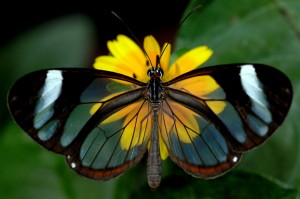For nearly a decade during summers I would get that “butterflies in the stomach” feeling. It was not some crazy disease that only occurs in summer but rather the anticipation you feel before a big game; the strange mixture of fear and excitement. Why summer? Simple, wildfire season.

During my mid-twenties through early thirties I had the great honor and privilege of serving with my sisters and brothers as a wildland fire fighter. Every summer I would wait for the call and fly out to whatever state needed us the most. Even though I no longer serve, I can’t help but have a reflexive nostalgia at this time of the year; remembering worrying about what might happen out there but excited for the opportunity to help people displaced by these fires.

Hopefully this year will be a mild fire season but more than likely we will see something pop up on our national news channels about a big conflagration somewhere. So what is really happening out there? Why can’t we control fire? Should we even try?

For over a hundred years we have been trying to control fire. You may remember this famous character from television commercials. It was Smokey the Bear’s job to remind you to help prevent wildfires. The National Park Service and Forest Service did a remarkable job of suppressing wildfire from the 1900s to the 1970s. However, as with most of our best intentions it turned out to be misplaced. Many ecosystems are fire adapted and need wildfire to thrive and remain intact. Suppression has led to changes in many ecosystems and in some cases have led to the large and destructive fires that have become commonplace. Of course, it is not as simple as pointing the finger at land management agencies, as it is their job to protect the resources they are stewards of and to provide a safe park we all can enjoy. There are many other factors such as drought, invasive plant species, and a changing climate that can add to the problem and make fire conditions worse.



In the western U.S. ponderosa pine forests historically have had low intensity surface fires with high frequency that helps maintain an open forest. Ponderosas can handle the low intensity surface fires because they have thick bark that was adapted for this type of fire regime. However, the story is different in California where chaparral shrublands dominate. They are adapted to infrequent, but high intensity fire. Although older plant material will dieback due to fire they have the ability to resprout and are therefore well suited to this fire regime.
In the case of ponderosa pine forests, suppression has caused fuel to build up which has led to destructive canopy fires that kill off the ill prepared pine. Unlike some pines, ponderosa don’t have cones that open in response to canopy fires (AKA serotinous cones). Chaparral systems are changing too, as intense fires have become more frequent (coming every few years instead of every few decades). Frequent fires kill chaparral shrubs and prevent regeneration, paving the way for non-native plants to invade.


The long and the short of it is that plants have evolved over millions of years to fire regimes that typify their ecosystems but human-influenced changes taking place over the last 100 years have radically altered the landscape and many plants cannot adapt fast enough to survive. The same force that balanced these ecosystems is the same force that is undoing them. As a result we are losing ecosystem resources fast and don’t fully know all the functions that are disappearing with them.
All is not lost. Land managers have adapted their strategies over the years to mirror historical fire regimes in order to more effectively manage for their particular ecosystems. Prescribed burns when done well (assuming the weather cooperates) are powerful tools to return ecosystems to a functioning state. There are still more challenges ahead especially for states experiencing record droughts but the fire community is adaptable and tough. Thanks as well to fire ecology research begin conducted at universities and research labs throughout the country as they provide current and relevant research to help guide management strategies as well as aid in any future dilemmas.
Please check out this link or this video to see cool fire behavior worldwide courtesy of NASA.
https://earthobservatory.nasa.gov/GlobalMaps/view.php?d1=MOD14A1_M_FIRE

